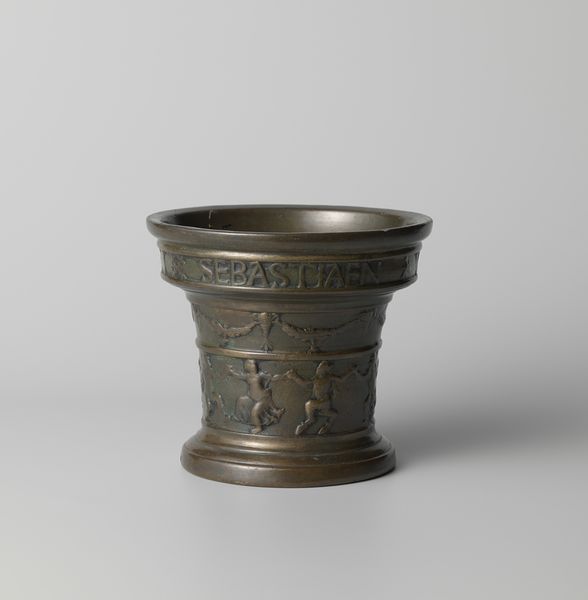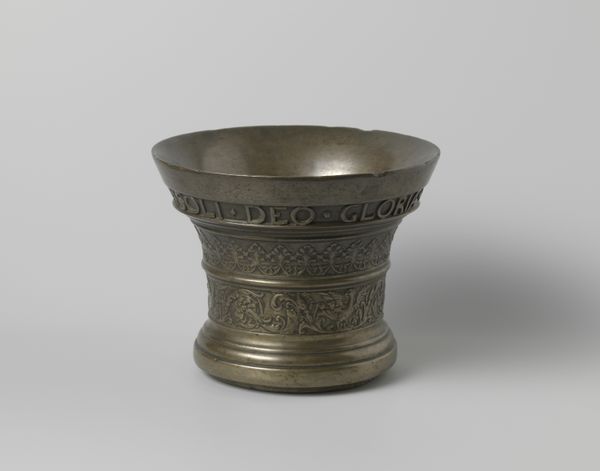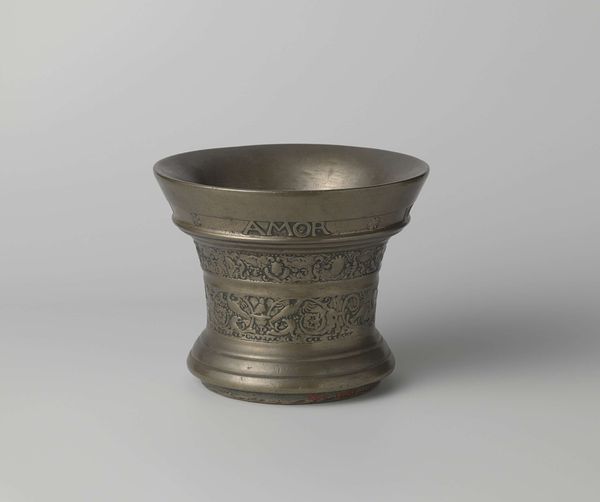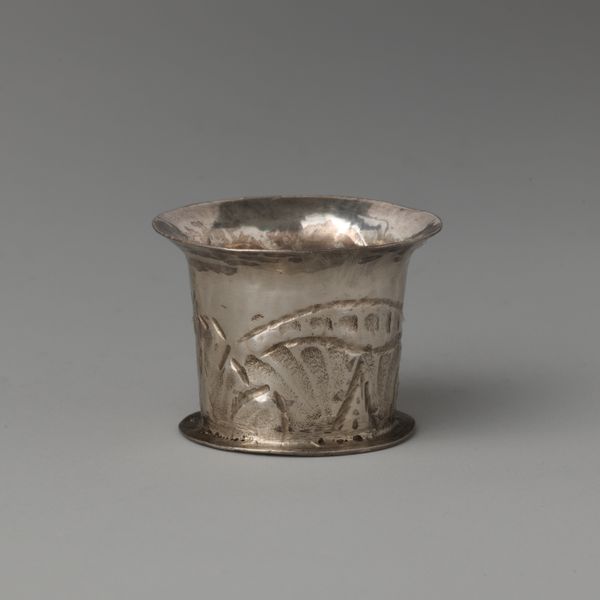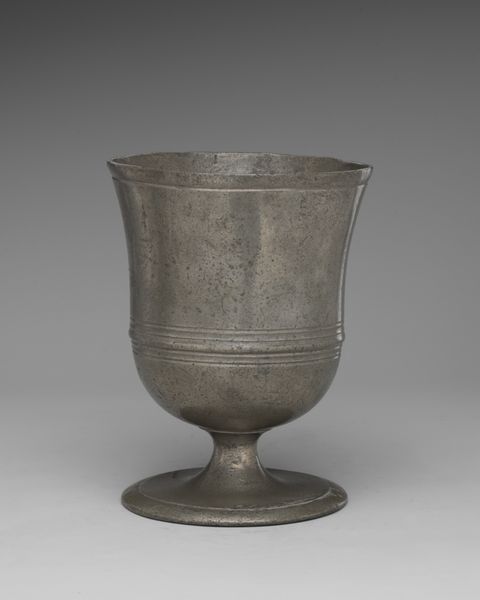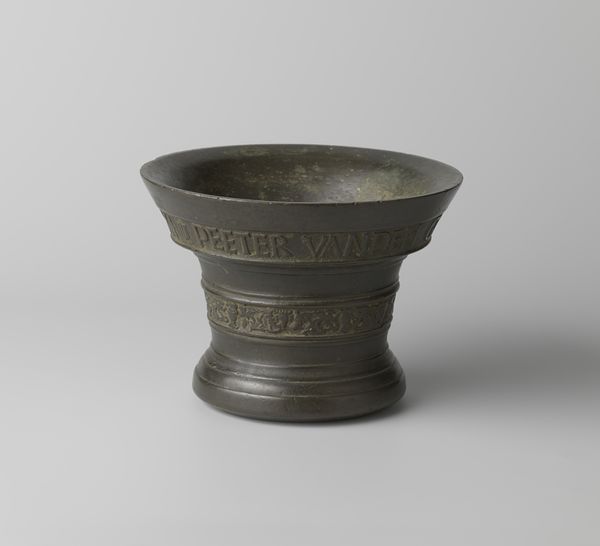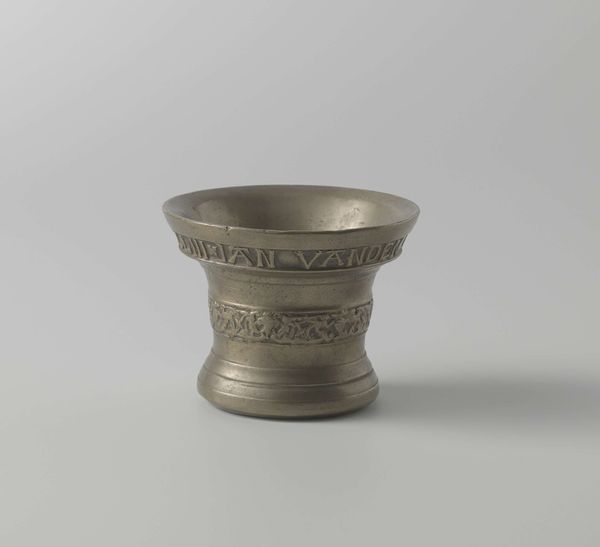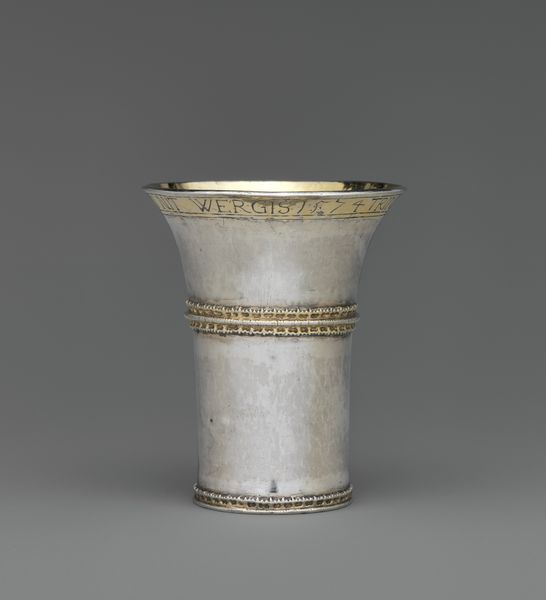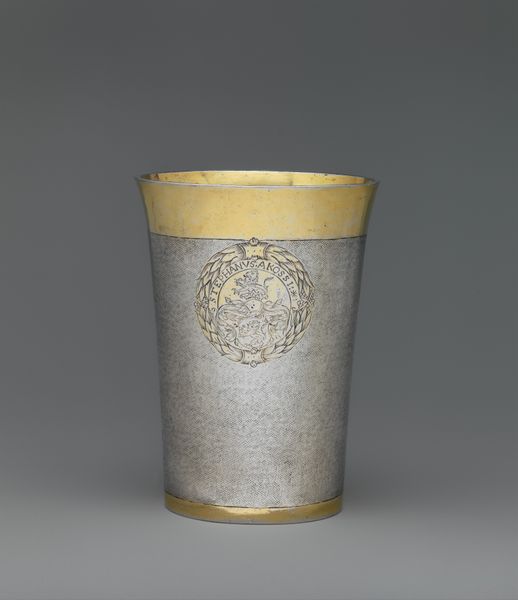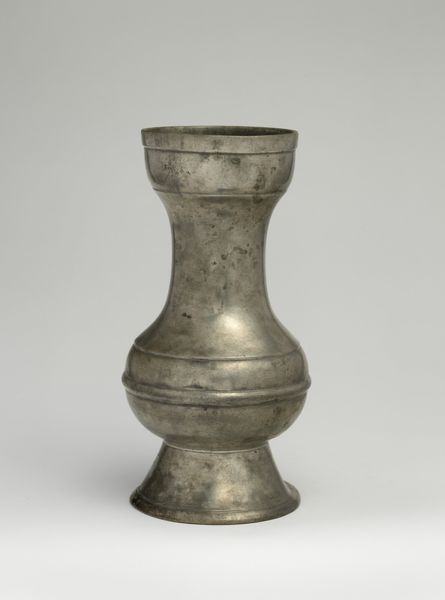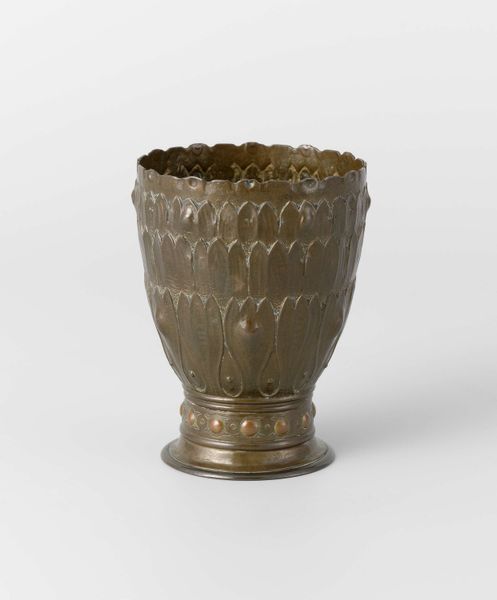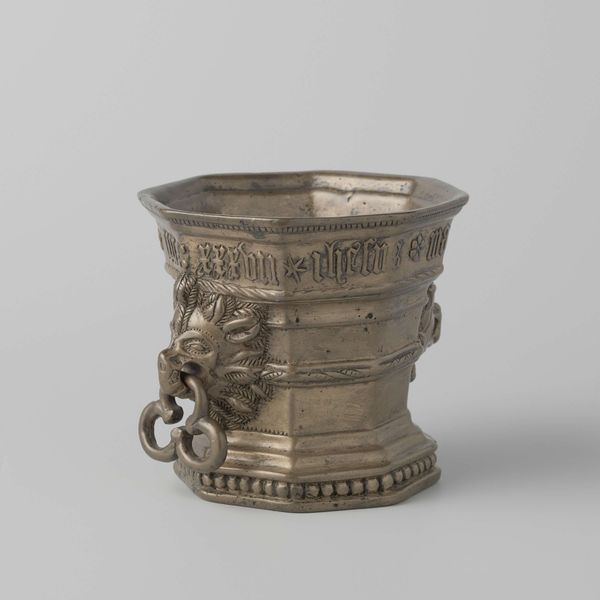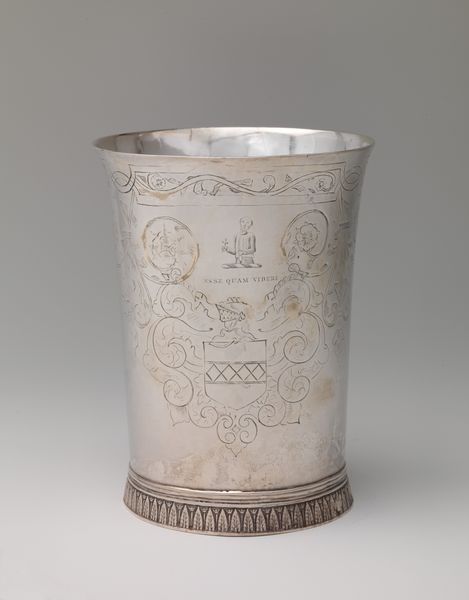
metal, relief
#
baroque
#
dutch-golden-age
#
metal
#
relief
Dimensions: height 17.5 cm, diameter 10.5 cm, diameter 8.7 cm
Copyright: Rijks Museum: Open Domain
Curator: Immediately striking is this piece’s cool, silvery surface and simple conical shape. It almost feels austere. Editor: Well, let's delve into what we have here. This is a tin beaker, dated somewhere between 1664 and 1699, and it's attributed to Jan van Zacharias. It's decorated with a relief depicting the coat of arms of Amsterdam. The fact that it’s tin and not silver or gold speaks volumes, I think. Curator: Yes, the material is so key. Tin production and its trade were expanding during the Dutch Golden Age. Was this for the burgeoning merchant class, perhaps? A celebratory toast to a successful venture? Editor: It could very well be. Amsterdam at this time was a center of global commerce and seeing its coat of arms—the three Saint Andrew’s crosses—emblazoned on such an everyday object surely had significance. What messages of civic pride did it send? Curator: Exactly. Think about the labour, the casting process. Was this mass-produced, indicating a wider accessibility, or a more bespoke, handcrafted item for someone of greater means? Editor: The design itself is intriguing. It displays the arms between two lions, topped by a crown. Were these common motifs in Dutch civic life then? Curator: Absolutely, the lions and the crown both project images of power and status, notions that are, of course, intrinsic to the historical importance of heraldry. Who were the artisans crafting objects like these? What were their workshops like, their means of acquiring and shaping tin? It all feeds into our understanding of daily life in the Dutch Golden Age. Editor: That focus on process is fascinating. Thinking about the context of the home or public house where it was used – the sounds, the smells, the other objects around it... it helps us realize its purpose as an active agent in history. It wasn't just sitting pretty, it was a tool of civic life. Curator: And its survival in relatively good condition is remarkable. How has it been handled, displayed, preserved? That also impacts our perception of it. Editor: True. A simple cup becomes a window into social status, industry, and civic identity. Curator: Precisely! Examining the history, while also appreciating the processes helps create a fully rendered perspective of Dutch society.
Comments
No comments
Be the first to comment and join the conversation on the ultimate creative platform.
